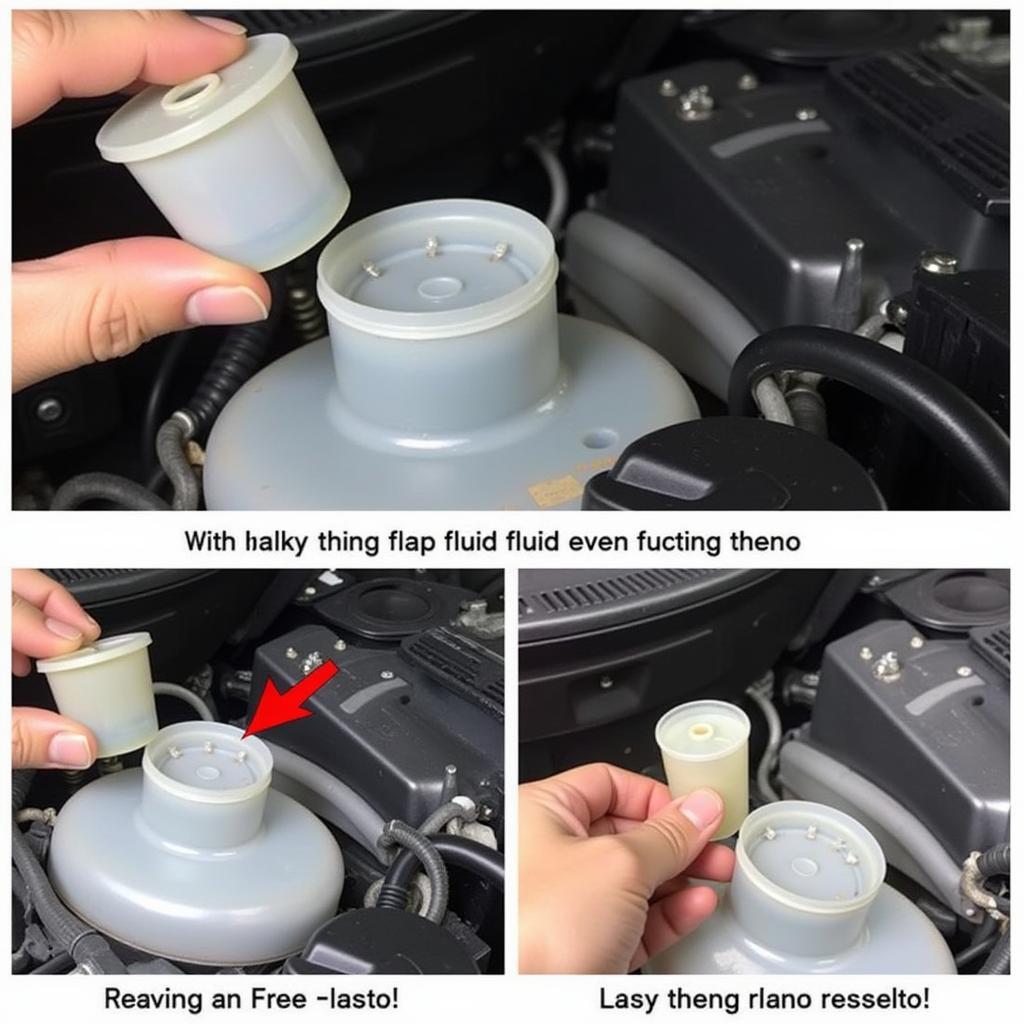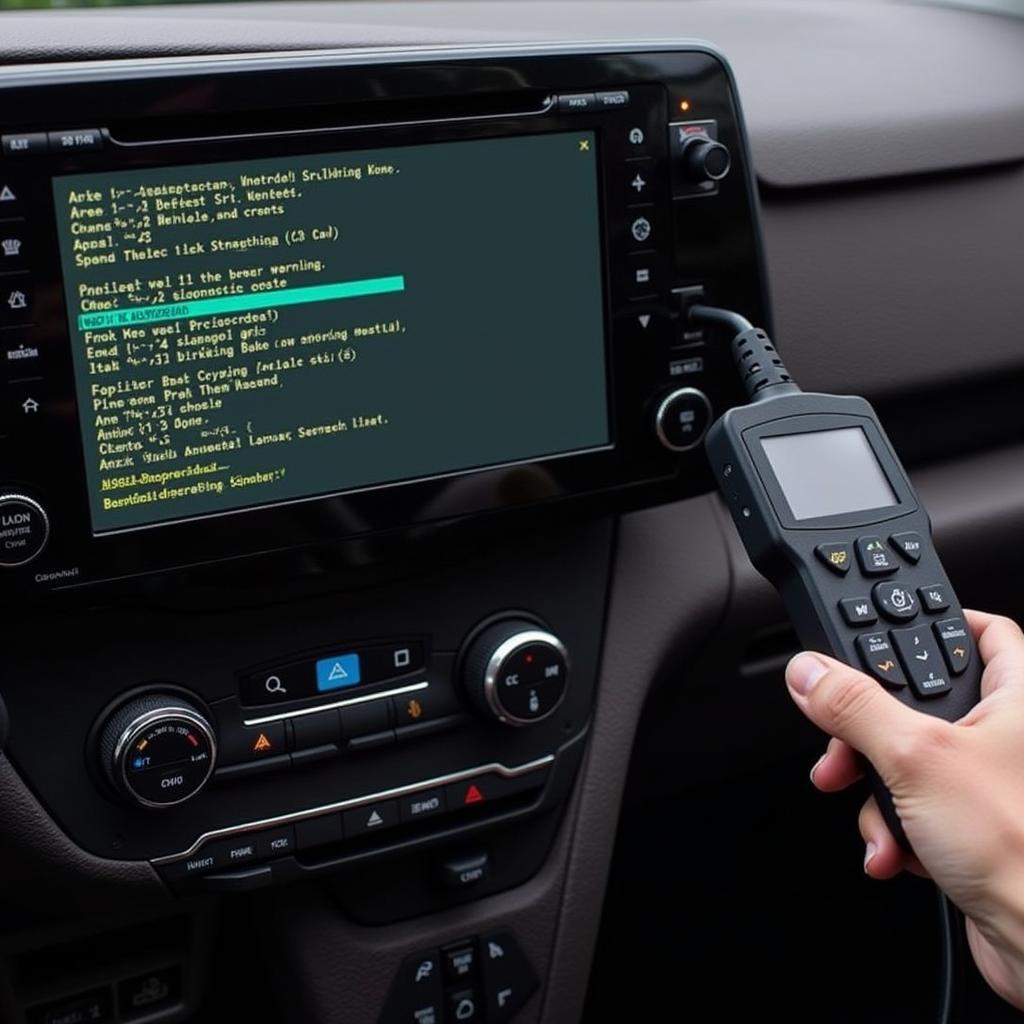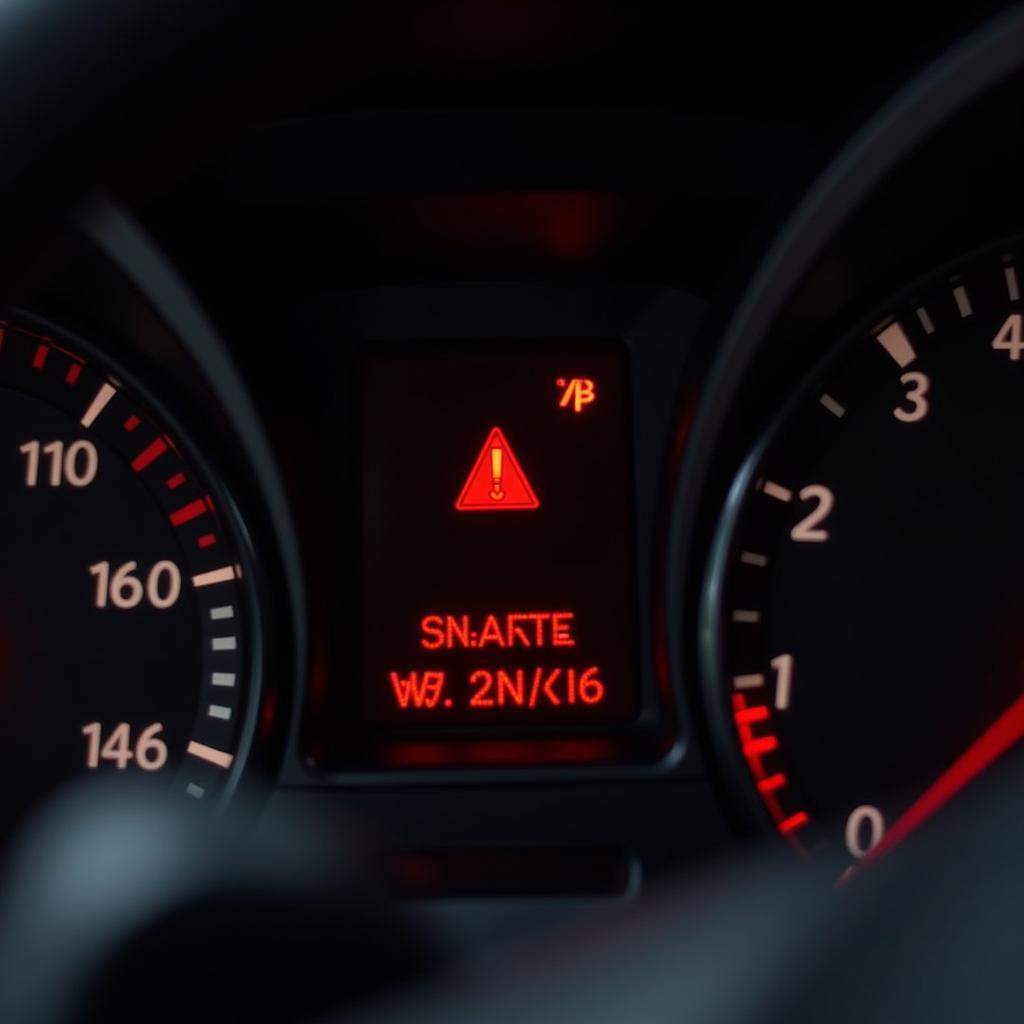If you’re experiencing a back gate and brake warning signal on your 2018 Toyota Sienna, you’re not alone. This issue can be alarming, but understanding the potential causes and solutions can help you get back on the road safely. This comprehensive guide will walk you through the diagnostic process, from simple checks to more advanced troubleshooting techniques, including information on remote software programming and installation.
Understanding the Warning Signals
The back gate and brake warning signals on your 2018 Toyota Sienna are interconnected and can illuminate simultaneously for various reasons. A lit brake warning light typically indicates low brake fluid, worn brake pads, or a problem with the braking system. The back gate warning light signals an issue with the rear hatch, such as a malfunctioning latch or sensor. When both lights come on together, it can point to a more complex electrical or system-wide issue.
Common Causes of the Dual Warning Signal
Several factors can trigger both the back gate and brake warning lights in a 2018 Toyota Sienna. These include a faulty brake light switch, a low battery voltage, a wiring harness issue, or a problem with the vehicle’s body control module (BCM). In some cases, a simple loose connection can be the culprit.
Diagnosing the Problem: A Step-by-Step Guide
- Check the Brake Fluid Level: The first step is to ensure the brake fluid reservoir is full. Low brake fluid can trigger both warning lights.
- Inspect the Brake Light Switch: A malfunctioning brake light switch can cause a range of electrical issues, including activating both the brake and back gate warning lights. Test the switch for proper operation.
- Check the Battery Voltage: A low battery voltage can disrupt the vehicle’s electrical system and trigger various warning lights. Use a multimeter to check the battery’s voltage.
- Inspect the Wiring Harness: Look for any signs of damage, corrosion, or loose connections in the wiring harness, particularly those related to the brake system and rear hatch.
- Check for Diagnostic Trouble Codes (DTCs): Use an OBD-II scanner to retrieve any stored DTCs. These codes can pinpoint the source of the problem.
 Checking Brake Fluid Level in a 2018 Toyota Sienna
Checking Brake Fluid Level in a 2018 Toyota Sienna
Advanced Troubleshooting and Remote Solutions
If the basic checks don’t resolve the issue, more advanced diagnostic procedures might be necessary. These can involve checking the BCM for faults, testing the sensors associated with the rear hatch, and inspecting the ground connections for the related circuits.
In certain situations, remote software programming and installation can be utilized to address the problem. This involves connecting to the vehicle’s onboard computer remotely and updating or reinstalling the necessary software.
“Remote diagnostics and programming are invaluable tools for addressing complex vehicle issues, often saving time and money,” says Michael Davies, Senior Automotive Electrical Engineer at Automotive Systems Diagnostics.
The Role of Remote Software Programming and Installation
Remote software programming allows technicians to access the vehicle’s control modules and update the software that manages various systems, including the brakes and rear hatch. This can resolve software glitches or compatibility issues that may be contributing to the warning signals.
 Using an OBD-II Scanner to Diagnose a 2018 Toyota Sienna
Using an OBD-II Scanner to Diagnose a 2018 Toyota Sienna
When to Seek Professional Help
While some diagnostic steps can be performed at home, it’s essential to seek professional help if you’re uncomfortable working on your vehicle’s electrical system or if the problem persists after basic troubleshooting. A qualified automotive technician with experience in remote diagnostics and programming can efficiently diagnose and resolve the issue.
“Accurate diagnostics are crucial. Don’t just throw parts at the problem. Proper testing and diagnosis will save you time and money in the long run,” advises Susan Miller, Lead Diagnostic Technician at Precision Auto Diagnostics.
Conclusion
Experiencing a back gate and brake warning signal on your 2018 Toyota Sienna can be concerning, but with a systematic approach to diagnosis and troubleshooting, you can pinpoint the cause and find a solution. Remember, remote software programming and installation can be a valuable tool in addressing these complex issues. If you’re unsure about any step in the process, don’t hesitate to seek professional assistance to ensure your Toyota Sienna is back in optimal condition.
FAQ
-
Can a low battery cause both the brake and back gate warning lights to come on? Yes, a low battery voltage can disrupt the vehicle’s electrical systems and trigger multiple warning lights.
-
Is it safe to drive with the back gate and brake warning lights on? It depends on the underlying cause. If it’s a minor electrical issue, it might be safe to drive temporarily. However, if it’s related to the braking system, it’s crucial to address the problem immediately.
-
How much does remote software programming typically cost? The cost varies depending on the specific issue and the service provider.
-
Can I perform remote software programming myself? It’s generally recommended to have a qualified technician perform remote programming due to the complexity and potential risks involved.
-
What is a body control module (BCM)? The BCM is a central computer that controls various functions in the vehicle, including lighting, power windows, and door locks.
-
How can I find a qualified technician for remote diagnostics and programming? Look for certified automotive technicians specializing in diagnostics and programming for your vehicle’s make and model.
-
What should I do if the warning lights come back on after the repair? Return to the technician who performed the repair to have the issue reevaluated.

